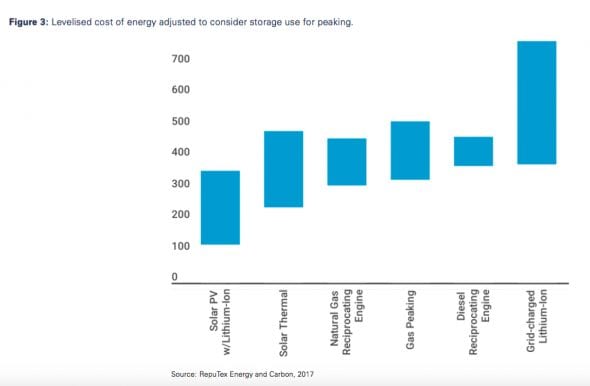The Australian domestic gas industry is facing a crisis point, with a shortage of supply projected for two years time, and battery storage and renewable energy ready to provide a cheaper alternative.
The Australian Market Operator on Thursday admitted that shortages over the 2018/19 summer, which it said were likely to hit the electricity sector hardest, and South Australia and NSW in particular, would present huge opportunities for new technologies such as battery storage and demand management.
The warning of shortages was enough to generate big headlines in the media warning of an energy catastrophe, and the Coalition energy minister Josh Frydenberg used it to again put pressure on Labor governments to wind back renewable energy targets, and drill for more gas.
But first a little bit of context. The AEMO report makes clear that Australia actually has a lot of gas, it is just choosing to export 70 per cent of that supply to customers overseas, because it can get more money.
Keeping just 5 per cent of those LNG exports would alleviate the domestic gas shortage, but that is unlikely to happen, AEMO says, because of the nature of the contracts. “The nature of those contracts means they are not reversible,” AEMO’s Mike Cleary told RenewEconomy.
The other key point is that there is actually enough gas in existing gas fields – but according to the gas producers, it can’t be extracted at a cheap enough price to make it worthwhile. What they are looking for is extra subsidies and price signals to make that worthwhile.
But why pay more subsidies when cheaper alternatives are available?
 Indeed, AEMO makes clear that the price of gas, which has largely driven the huge increase in wholesale electricity prices in Australia over the last two years, see the graph above, will not be coming down.
Indeed, AEMO makes clear that the price of gas, which has largely driven the huge increase in wholesale electricity prices in Australia over the last two years, see the graph above, will not be coming down.
“The increased cost of sourcing new gas supply means additional gas in the market may not translate to lower prices,” it says. It is this that presents the opportunities for other techologies, because their costs are coming down, and quickly.
And it seems those technologies are ready to compete. Tesla’s Lyndon Rive claimed on Thursday that Tesla could solve South Australia’s problems by building a 100-300MWh of plug and play grid-connected battery storage in under 100 days.
And in a separate report also released on Thursday, industry analysts Reputex said the cost of renewables and storage had surpassed gas as the ‘least cost’ source of energy supply – even if the sun is not shining and the wind not blowing.
“Advancements in the cost of energy storage technology, coupled with significant rises in the domestic gas price, have now made wind and solar – with storage – competitive with gas in providing system reliability in the form of instantaneous peaking or load-following generation,” says Bret Harper, head of research at RepuTex.
“This means new renewable facilities, with storage, are the least cost source of firm power, and able to provide energy supply even if the sun is not shining, or the wind not blowing.
“Traditionally, gas-fired generators have been the least cost technology that could provide energy security, such as load-following and peaking services, however the rising price of gas has increased the levelised cost of any new gas build in Australia.
When we consider the ‘full cost’ of renewables to supply dispatchable power – including storage costs to ensure supply even when the wind is not blowing or the sun not shining – we find that renewables have overtaken gas as the least cost source of new firm supply,” he says.
As Reputex notes, the analysis is significant for the federal debate on energy security, and the shortage warnings for AEMO, not to mention the pressure on Victoria in particular to open up farming lands for coal seam gas.
It also supports research by the CSIRO, Energy Networks Australia and the ANU – and many other reports before that – that Australia can have a grid with extremely high renewable energy penetration, and at no higher cost. In all reports, it is likely to be cheaper, the CSIRO and ENA says $100 billion cheaper by 2050.
“As older coal and gas-fired generation leave the market, new dispatchable renewables will be able to provide energy during daily peaks, adjust as demand changes throughout the day, or provide reserve peaking generation capacity to alleviate critical situations such as those in South Australia and New South Wales,” Harper says.
“Moreover, they can now provide that service at ‘least cost’, surpassing gas”.
“Our view is that this will create a decreasing need for baseload-only facilities, with potential for states to rely on new storage technologies to provide affordable, clean, and secure energy, while improving system reliability.”
And the Reputex research is not good for the Coaliton government’s favourite technology of “clean coal”. Reputex says it is too expensive, will not be able to compete with other technologies until well after 2030, and even then will not have the flexibility required for a future grid.
“That is not good news for coal generation, irrespective of how clean it is,” Harper says.











